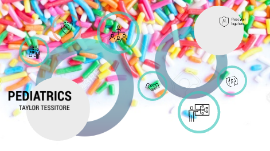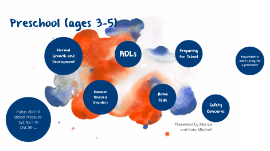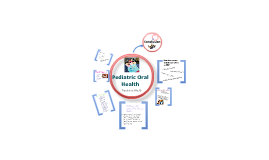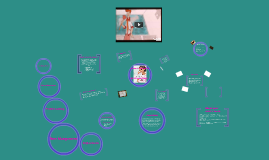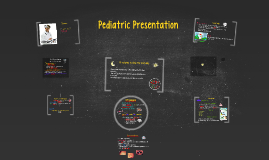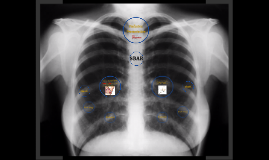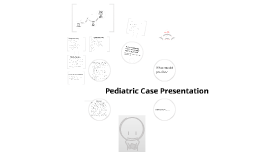Pediatric Presentation
Transcript: Vaccines: 2. Clinical findings in an epidemic of herpangina with myalgic, neurological and gastro-enteritic features. FRASER Can Serv Med J. 1957 Jul;13(7):407-19. Management Higher fever 102-104 Throat: hyperemia and yellow/greyish-white papulovesicular lesions Lack of skin involvement Note... Following acute infection, enteroviruses are shed from the stool (6wks-several months) and throat (4 wks) for prolonged periods and the isolated virus may or may not be responsible for the current symptoms. Oral Enanthem 24 h Presentation: -Fever 103 and vomited after taking Motrin that morning -Decreased PO intake due to new, painful blisters in mouth -Painful blisters appeared on palms and soles papules vesicles ulcerations Everyone, but particularly younger than 5-7 years old Wide spectrum of severity Minor vs Major (Stephens Johnson) The papules become target or iris lesions within a 72-hour period and begin on the extremities. Remain ~ 7 days and then begin to heal. Precipitating factors: herpes simplex virus (HSV), Epstein-Barr virus (EBV), and histoplasmosis. Pediatric Presentation --Pt received MIVF and placed on PCA pump for pain control due to the intense pain pt experienced associated to the lesions. --Multiple swabs consistently neg for HSV, but due to biopsy + for EM, placed pt on suppressive dose of Acyclovir with IV steroids. --Ophthalmology rec erythromycin ointment for eyes until lesions around eyes improved -Clinical diagnosis -Laboratory tests (e.g., HSV-1 and -2, immunoglobulin M and G) -Skin biopsy PLAN: Direct admit to W&C for decreased PO intake and pain control Brief Hospital Course: Diagnosis: 50% of cases are related to medication use Rofecoxib (Vioxx) Candesartan cilextil (Atacand) Ciprofloxacin (Cipro) Metformin (Glucophage) Bupropion (Wellbutrin) Adalimurab (Humira) When fever is gone usually in 2 to 3 days. If widespread blisters, stay home until the blisters dry up ~ 7 days When to return to school?? Diagnosis: Erythema Multiforme 24 h Incubation period... Tests: Rapid Mycoplasma IGM positive Viral Diatherix: +enterovirus Pt returns to clinic: Not tolerating PO intake and vomiting ; increased throat pain and unable to keep pain meds down Increased # of blisters and lesions on palms and soles; Fever resolved WBC: 24K; negative HSV 8. Ayangco L, Rogers RS III. Oral manifestations of erythema multiforme. Dermatol Clin 2003;21:198 Parasites: 3. HAND, FOOT, AND MOUTH DISEASE"IN CHILDREN; AN EPIDEMIC ASSOCIATED WITH COXSAKIE VIRUS A-16. RICHARDSON HB Jr, LEIBOVITZ AJ Pediatr. 1965 Jul;67:6-12. Treatment: Exam: Causes... May be painful/nonpruitic hands feet buttocks trunk face fingernails Bacterial Drugs: The case... 7. Erythema Mulforme. Jose A Plaza, MD Director of Dermatopathology, emedicine.medscape.comarticle/1122915overviewpa=o5E4EWcGjoT4Zvrrm1pZgG1sYhB8kDqSfi76cBhc2di7QH4%2B7VT98f0kNJ%2BIQF3pLfpFASqy1cuE0D5oYYijQPzf93FVBcPwXD4yvpU7Ryc%3D#a2 macular, maculopapular, vesicular (1-10mm) Exam: 6. Neurologic complications in children with enterovirus 71 infection. Huang CC, Liu CC, Chang YC, Chen CY, Wang ST, Yeh TF N Engl J Med. 1999;341(13):936. Coxsackievirus A2, A4 to A10, A16, B2, B3, B5 Echovirus 1, 4, 7, 19 Enterovirus A71 Tetanus-Diptheria Smallpox Hep. B HFMD: supportive tx and Norco 7.5/325mg q6hrs PRN pain; HSV by rapid PCR, CBC Oral thrush: fluconazole Trichomonas species and Toxoplasma gondii Herpangina A/P: Eyes: BL Hyperemia with mucoid DC Oropharynx: white patches, erythematous papules, inflamed tonsils BL Resp/Card: CTAB/RRR Abd: NT, ND +BS Skin: no rashes, warm/dry References 7 year old male with PMH of hand, foot, mouth 3 months prior, presents to clinic c/o: -fever 102F past two days -stringy, mucoid eye discharge -congestion and sore throat A/P: Adenovirus, coxsackievirus B5, cytomegalovirus (CMV), echoviruses, enterovirus, Epstein-Barr virus (EBV), hepatitis A / B / C viruses (HAV / HBV / HCV), HSV, influenza, measles, mumps, paravaccinia, parvovirus B19, poliomyelitis, varicella-zoster virus (VZV), and variola. 1. Herpangina; clinical studies of a specific infectious disease. PARROTT RH, ROSS S, BURKE FG, RICE EC SON Engl J Med. 1951 Aug;245(8):275-80. Most common: HSV 1 &2, then Mycoplasma species Strep + pharyngitis: Keflex x 10 days Acute bacterial conjunctivitis: Ofloxacin drops x 5 days Ingestion/contact: fecal material, oral secretions, vesicle fluid or, for some serotypes, respiratory secretions. Usually supportive Indications for hospitalization: ●Inability to maintain adequate hydration ●Neurologic or cardiovascular complications, such as: ●The inability to differentiate eczema coxsackium from eczema herpeticum (for HFMD only) Prevention: Hand hygiene Child care Isolation Vaccines 5. Clinical and laboratory differentiation between herpangina and infectious (herpetic) gingivostomatitis. PARROTT RH, WOLF SI, NUDELMAN J, NAIDEN E, HUEBNER RJ, RICE EC, McCULLOUGH NB Pediatrics. 1954;14(2):122. buccal mucosa tongue uvula lips tonsils -Flavorings: benzoic acid and






